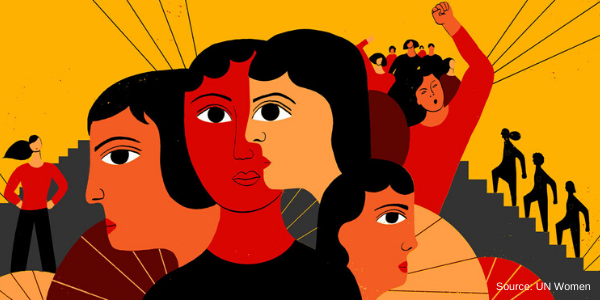Locked Out, Stoned Down: Another Shocking Case of Domestic Violence from Rajasthan
28 August 2025
By Pavni
STONED WALLS, CRYING CHILDREN
The viral video is brief, yet unforgettable. A woman beats on the door after being refused entry to her married home. Above, her mother-in-law transforms the terrace into a fortress, and starts throwing stones until the child and daughter-in-law are forced to leave. The lock clicks shut, and humanity seems to too. This is not just a “family quarrel.” Nearly 30% of Indian women report having been victims of domestic abuse, according to NFHS-5. Disturbingly, research in the Journal of Interpersonal Violence notes that mothers-in-law are perpetrators in up to 18% of reported cases in South Asia. In patriarchal households, women policing other women to recover power fragments is an example of systematic violence in addition to marital violence. In many Indian homes, domesticity does not promise peace - it mutates into a battlefield where love, duty, and power collide. Indian soap operas have made saas-bahu (mother-in-law and daughter-in-law) relationships into a never-ending drama, but behind the melodrama lies a research-validated truth: The National Family Health Survey shows nearly 30% of married women in India say they have been victims of domestic violence, and not all of it comes from their husbands. In-laws, particularly mothers-in-law, emerge as significant enforcers of patriarchal discipline.
STATISTICS, RATES AND DRAWBACKS
In India, Domestic violence is still very much common and still it is extremely underreported. Nearly one in three women have experienced abuse and torture of some or other kinds, according to NFHS-5 but fewer than 7% ever call the police, and they fear blot on their escutcheon and that fear frequently prevent them from speaking out. Data from national commission for women shows that in 2024 alone, 6200 complaints were registered under domestic violence, with UP topping the list , but these only represent a fraction of actual incident. Conviction rate are still pitifully low, despite 53% increase in reported cases of cruelty. Offenders frequently escape punishment for their crimes while victims are forced to deal with their trauma in silence, exposing legal inefficiency and systematic indifference and majority of cases collapse due to sluggish investigations and the so called social pressure to “settle matters privately"
ABSURD THEATRE OF KINSHIP
The setting of this incident is what almost makes it ridiculous: a house, which is the most fundamental representation of shelter, turns into a siege site. The roof becomes a fortification. Words are replaced by stones, and the lock on the door represents exile rather than security. The child’s cries are the most eerie. Children who witness domestic abuse grow up with scars and carry those scars into adulthood, resulting in heightened anxiety, broken trust, and too often, cycles of replication. In that cry lies tomorrow’s trauma, seeded in today’s absurd quarrel. The daughter-in-law, however, embodies a stark, universal reality in her frantic knocking on the door: survival demands entry, even when family demands exclusion.
BEYOND OUTRAGE ON SOCIAL MEDIA
Even on a reliable channel like NDTV, a viral reel runs the risk of becoming a spectacle that is watched, shared, and then forgotten. However, as academics like Veena Das point out, violence in South Asian households is “the everyday” rather than a spectacle. When a saas throws stones, she is not only assaulting her bahu but also rehearsing centuries’ worth of intergenerational scripts, written in patriarchy’s handwriting and performed by women made into both victims and enforcers.
CLOSING THOUGHT
A woman’s misery, a child’s cries, and stones falling from a rooftop - it is both mundane and tragic. In India, domestic violence often looks less cinematic, more claustrophobic. The video is not absurd, but how people are normalising this is totally absurd. The reel may trend for a day; the trauma, the wounds, the scars - physical and invisible both - will echo beyond time.


